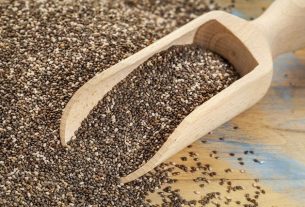Scurvy is a disease that is currently considered rare, and is caused by a severe lack of vitamin C in the body, which ends up generating symptoms such as easy bleeding and difficult healing. This condition is treated with vitamin C supplementation, which must be recommended by a doctor or nutritionist.
Vitamin C, also known as ascorbic acid, can be found in citrus fruits such as orange, lemon, pineapple and acerola, and in vegetables such as potatoes, broccoli, spinach and red pepper. This vitamin remains in the juice for approximately half an hour and does not resist heat, which is why vegetables rich in this vitamin must be consumed raw. Check out a list of the main foods rich in vitamin C.
The daily recommendation for vitamin C is 30 to 60 mg, depending on age and sex, but greater consumption is recommended during pregnancy, breastfeeding, women taking the contraceptive pill and people who smoke. Scurvy normally only appears when the amount of vitamin C consumed is less than 10 mg per day.

Main symptoms
Symptoms of scurvy usually appear 3 to 6 months after stopping or reducing the consumption of foods rich in vitamin C, which causes the appearance of signs and symptoms such as:
- Easy bleeding from the skin and gums;
- Difficulty in wound healing;
- Easy fatigue;
- Pallor;
- Swelling of the gums;
- Loss of appetite;
- Dental deformities and falls;
- Small hemorrhages;
- Muscle pain;
- Joint pain.
In the case of babies, irritability, loss of appetite and difficulty gaining weight may also be noted, as well as pain in the legs to the point of not wanting to move them. Learn about other symptoms of a lack of vitamin C.
How to confirm the diagnosis
The diagnosis of scurvy is made by a general practitioner, nutritionist or pediatrician, in the case of children, by evaluating the signs and symptoms presented, analyzing eating habits and the results of blood and imaging tests.
One way to confirm the diagnosis is through an X-ray, in which it may be possible to notice generalized osteopenia and other typical signs of scurvy, such as the scurvy or Fraenkel line and the halo or Wimberger ring sign.
What causes scurvy
Scurvy occurs due to a lack of vitamin C in the body, because this vitamin is related to several processes in the body, such as collagen synthesis, hormones and iron absorption in the intestine.
Therefore, when there is less of this vitamin in the body, there is a change in the collagen synthesis process, which is the protein that is part of the skin, ligaments and cartilage, in addition to reducing the amount of iron absorbed in the intestine, resulting in typical symptoms. of the disease.
How should the treatment be
Treatment for scurvy must be carried out with vitamin C supplementation for up to 3 months, and the doctor may recommend the use of 300 to 500 mg of vitamin C per day.
Furthermore, it is recommended to include more foods that are sources of vitamin C in your diet, such as acerola, strawberries, pineapple, oranges, lemons and yellow peppers, for example. It may also be interesting to drink 90 to 120ml of freshly made orange or ripe tomato juice, every day, for around 3 months, as a way to complement the treatment. See other foods that are sources of vitamin C.

Sign up for our newsletter and stay up to date with exclusive news
that can transform your routine!
Warning: Undefined array key "title" in /home/storelat/public_html/wp-content/plugins/link-whisper-premium/templates/frontend/related-posts.php on line 12
Warning: Undefined array key "title_tag" in /home/storelat/public_html/wp-content/plugins/link-whisper-premium/templates/frontend/related-posts.php on line 13



